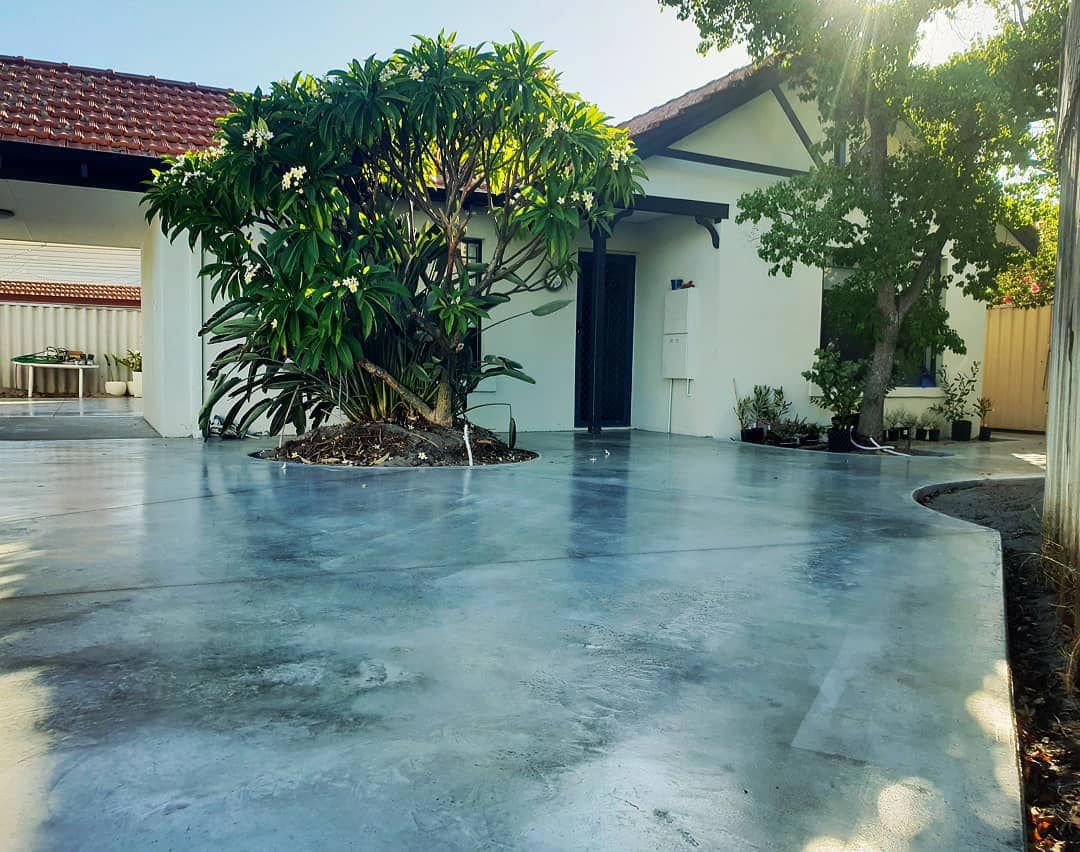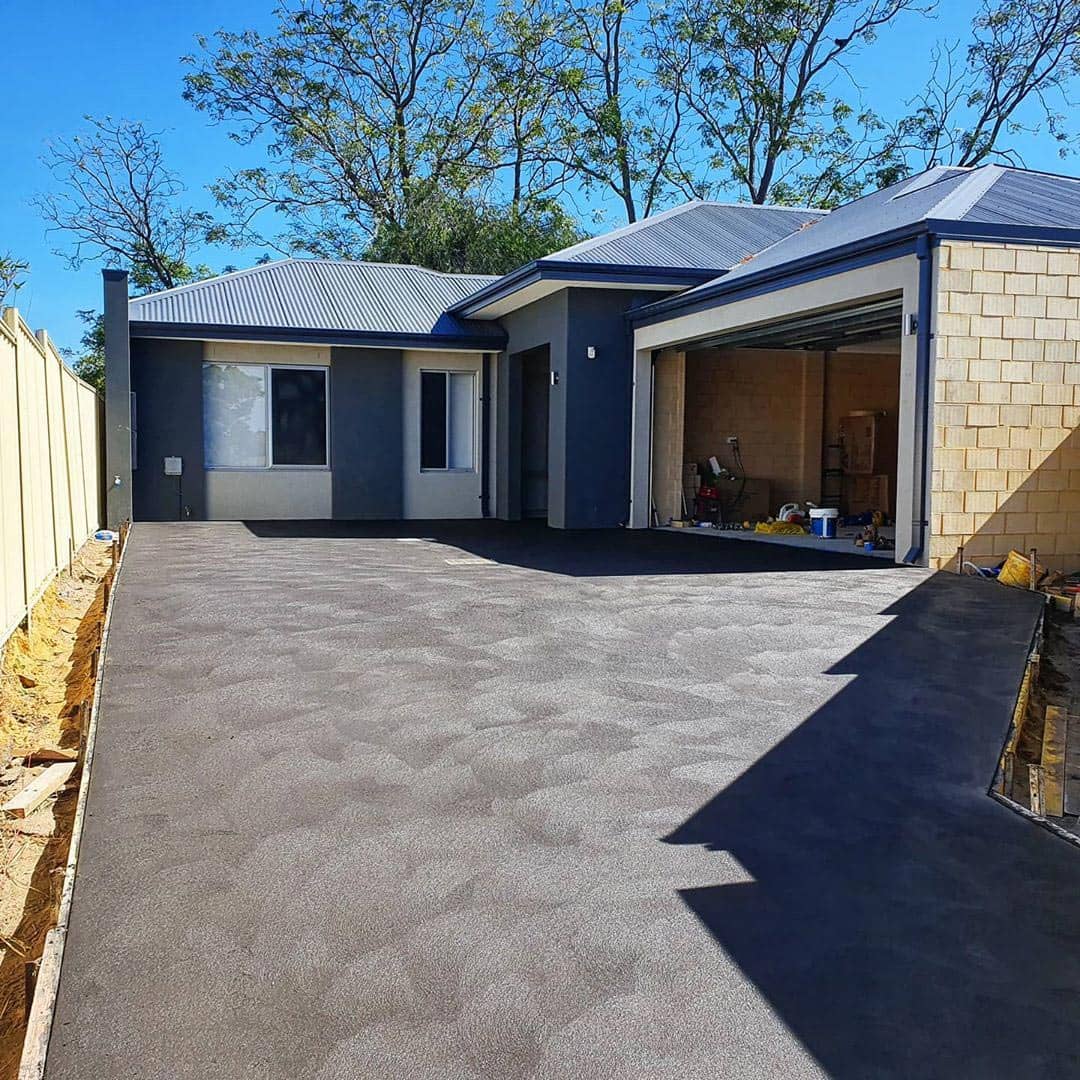The driveway is one part of the house that you most likely do not think about a lot. That is until you notice a problem. Repairing a driveway is not an easy task and can definitely cost a lot. However, if you discovered the issue early, you may be able to fix it and even save some cash.
When you see signs of wear and tear, such as potholes and cracks, what should you do? Driveway damage can be due to different reasons, including excessive motor oil leaks, freezing temperatures, heavy automobile weights, and de-icing materials.
There are various types of concrete used for a concrete driveway, from standard grey concrete to exposed aggregate.
This blog post will help you decide when to repair some minor issues. We will also answer the question, “Do you need a whole new driveway?”
First Things First
How long do driveways typically last? The answer depends on a variety of factors, including the climate in your area. Perth is warm for the most part of the year. Summers are often cool, and winters are rainy. These seasons affect the lifespan of the driveway, especially when the weather becomes unpredictable. It all boils down to how much maintenance it requires and how much of it you provide. Primarily, however, the longevity depends on the material.
If you have a concrete driveway, it should last about 30 years or more with proper installation and care. For those who live in colder climate areas, concrete may break down sooner. Nevertheless, it should remain functional for at least 20 years.
Driveway Problems That Need Repairs
If you notice that there are changes in your driveway, it may be time to plan some repairs, resurfacing, or patching. What are the signs that this spot needs your attention? Look for the following issues:
- When you see small cracks that do not connect with one another and are less than 6.35mm wide, repair them right away. Otherwise, these cracks can quickly spread, which will make them harder to fix. Also, if water freezes, it can expand in the crack. Unfortunately, those little flaws can become broader and deeper, making them a more serious matter.
- Potholes not only make the driveway unattractive but also unsafe. They form when water freezes and then later expands, pushing out gravel and dirt. One pothole is not something to worry about because it can easily be fixed when addressed quickly enough.
- Faded colour is a sure sign of driveway ageing, but it is not something to freak out about. Even if it looks like a different colour, you can still use the driveway. For concrete driveways, you can fix them by patching the cracks (if there are any) and adding a sealant right after.
- The driveway can sink lower than the garage after a few years, primarily if you use the path all the time. It is actually a common problem, which occurs due to various reasons. For example, the area has a poor foundation or was not prepared properly prior to the installation of the pathway. Water leaks are also one of the leading causes, as well as environmental factors, such as an unstable ground.
- When you see that the edges of the driveway are crumbling, do not panic. It is also a naturally-occurring problem, particularly for those with asphalt driveways. Typically, it is a sign of weak or thin edges, which you can fix by adding extra edging.
- Signs of wear usually appear when the driveway is about 10 years old. However, if it is less than a decade and you see cracking and sagging, the best thing to do is to make repairs right away. Fixing it now will help extend the life of the pathway.
If you take a look at the signs listed above, you will see why repairing is a better solution than replacing the driveway altogether. Minimal damage that covers less than half of the surface is ideal for repairs. It should allow you to preserve the driveway’s integrity as a whole.
What about resurfacing, though? Your decision to resurface the pathway will not depend on how much repair is required, but rather the state of the foundation. Even if it needs extensive repairs, you can resurface it instead if the foundation is still intact. You may also choose this option if you do not like how patched concrete looks like.
Signs It’s Time to Replace Your Driveway
If you believe that the damage is quite severe, you may consider replacing the driveway. It is indeed a big decision, which also equates to a huge investment without a doubt. Before you opt for this solution, you should first determine whether or not your driveway has the following problems:
- You see multiple potholes. Above, we talked about repairing one pothole. This time, you have more than one. When there are many potholes in the driveway and they run deep, you may want to consider replacing the area rather than a quick solution. Several deep potholes are dangerous because they can affect the integrity of the driveway’s foundation. They will invite water in, which can cause more damage to the site. It is also much more expensive to repair these potholes one by one.
- There are spider web or alligator cracks on the driveway. These cracks are interconnected and may even look like scales. If these cracks cover the majority of the driveway, it is undoubtedly time for a replacement.
- You have a driveway that is over 20 years old. Sometimes, even diligent upkeep cannot save the driveway. When it shows signs of wear, and it was installed two decades ago, consider replacing it. Yes, it will be costly, but it helps keep the area intact while also ensuring the safety of the household.
- There are some drainage issues. The driveway (or yard) may not be draining correctly, which can lead water towards the interiors of the house. You should address this issue as quickly as you can to prevent severe property damage.
- You notice multiple areas now require individual repairs. Instead of repairing these spots separately, opt to replace the driveway. It is actually less expensive, especially because independent repairs can sometimes be ineffective. There could be underlying issues, as well. It would be a wiser choice if you replaced the entire area, which could surprisingly help you cut the costs.
Perhaps the biggest question you have is about the prices involved. How much does it cost to replace the driveway? The area, materials used, and the size of the driveway all play a role in the amount you need to shell out. Typically, concrete driveways are much more expensive than asphalt. However, the latter has a shorter lifespan and is even prone to more problems than concrete. If you want a more cost-effective solution, the choice to make is quite apparent.
Without a doubt, replacing the driveway is an investment. Often, you need a big budget to cover the entire expenses. The good news is that it will take several years before you need to replace it again.
Do you see the signs mentioned above in your driveway? What is your verdict? If you need help and you would like to save when replacing or repairing the area, leave the job to a professional. Call CoastCrete to find out how we can assist you.







